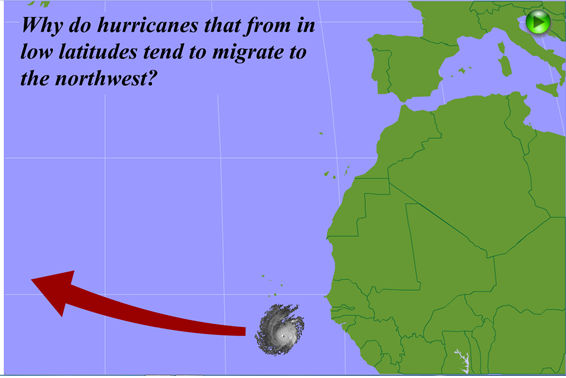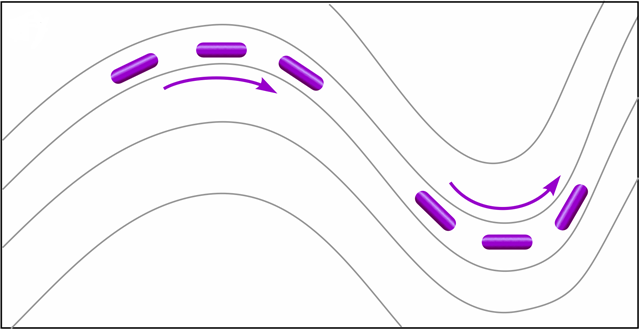Yesterday I talked about the steering of tropical cyclones by the mean wind in a steering layer determined by the system's minimum central pressure (revisit the relevant graphic). For strong hurricanes, the steering layer spans a large portion of the troposphere. For example, the steering layer for a hurricane with minimum central pressure between 940 mb and 949 mb spans from 850 mb (roughly 5000 feet) to 250 mb (roughly 35000 feet). The mean wind in this layer (the "steering wind") accounts for roughly 80% to 90% of the hurricane's motion.
As I briefly mentioned yesterday, about 10% to 20% of the storm's motion arises from the Beta effect. You might think that forecasting the track of tropical cyclones would thus be "child's play." But modeling the Beta effect isn't easy. The Beta effect gets even more complicated when tropical cyclones are moving briskly and undergoing rapid changes in intensity. Lesson learned: Predicting the tracks of tropical cyclones, though forecasters continue to improve, is not an exact science. Sometimes, it's far from it.
Hurricanes moving due westward tend to drift northwestward in time. Why? Stay tuned.
What is the Beta effect? For starters, let's agree to restrict our discussion to the Atlantic Ocean in the Northern Hemisphere. In a nutshell, the Beta effect arises from the variation of the Coriolis parameter with latitude. This variation of the Coriolis parameter is the primary reason why hurricanes forming at low latitudes tend to drift northwestward (see schematic above) from their westward track (for simplicity, I'm assuming here that the mean wind in the deep steering layer blows from east to west across the Atlantic Ocean).
Before we delve into the nuts and bolts of the Beta effect, I need to make sure that all my readers are on the same page with regard to some of the basic concepts about vorticity that are relevant to this discussion. First, vorticity is simply the measure of the spin around an axis. For the most part, synoptic meteorologists are interested in the spin around the local vertical, which is simply a line drawn from a point on the earth's surface to the center of the earth (here's an idealized schematic of a few local verticals, courtesy of A World of Weather: Fundamentals of Meteorology). This "vertical vorticity" (spin around a local vertical) is not fast by most standards. For sake of comparison, the vertical vorticity of a tornado with a diameter of 100 meters is roughly 10,000 to 100,000 times greater than the vertical vorticity that's relevant in synoptic meteorology. Nonetheless, such seemingly slow spin plays a pivotal role in weather.
An idealized schematic showing a 500-mb ridge (left) and a 500-mb trough (right). 500-mb height lines are the thin, dark contours, and the capsule-shaped features represent air parcels. Note how an air parcel moving through the ridge gains anticyclonic spin (negative relative vorticity) and an air parcel moving through the trough gains cyclonic spin (positive relative vorticity). Courtesy of A World of Weather: Fundamentals of Meteorology.
There are two sources of vorticity that weather forecasters weigh. The first is relative vorticity, which is generated by the curvature of isobars or height contours on a constant pressure surface. For example, an air parcel shaped like a Tylenol capsule acquires relative vorticity as it simply flows through 500-mb troughs and ridges (check out this idealized schematic above, courtesy of A World of Weather: Fundamentals of Meteorology). To get your bearings, the contours that form the ridge and trough are 500-mb height lines. At any rate, air parcels acquire cyclonic vorticity (by convention, a positive number) as they round the bend in the trough, and anticyclonic vorticity (negative relative vorticity) as they negotiate the curve in the ridge....MORE
Saturday, July 27, 2013
Hurricane Science: Tempestology and the Beta Effect
From Wunderblog:

